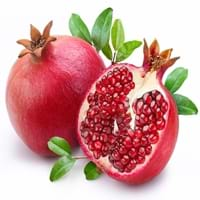Health Benefits
Cancer prevention, Controls blood pressure, Heart care, Increase in haemoglobin, Prevents constipation, Prevents macular degeneration, Reduces nervous tension
Cancer prevention, Heart care, Helps in cartilage regeneration, Improves stomach health, Increase in haemoglobin, Increases metabolic rate, Prevents constipation
General Benefits
Controls blood pressure, Helps in weight loss, Maintains healthy cholesterol level, Strengthens bones
Boosts immune system, Controls blood pressure, Controls blood sugar levels, Digestive aid, Maintains healthy cholesterol level
Skin Benefits
Brightens and lightens complexion, Hydrates skin, Skin rejuvenation, Treatment of acne
Anti-aging benefits, Skin rejuvenation, Treatment of acne
Hair Benefits
Good conditioner, Regulates hair growth, Softening mask
Prevents hair loss, Promotes longer and healthier hair, Treatment of dandruff
Allergy Symptoms
Abdominal pains, Anaphylaxis, Coughing, Headaches, Hives, Itching, Nasal congestion, Skin rash, Sneezing, Sore throat, Swelling of hands
Abdominal pains, Anaphylaxis, Itching
Side Effects
Allergic reaction, Skin rash, Possibly unsafe during pregnancy
Allergic reaction, Cold, Breathing difficulty, Irritation, Swelling
Best Time to Eat
Best if taken as a breakfast (or empty stomach), Don't consume at night and before bed, Morning time (before lunch)
Best if taken as a breakfast (or empty stomach), As a snack in the late afternoon, Eat the fresh ones, avoid mixing with any other foods, don't eat after meal., Morning time (before lunch)
Vitamin B5 (Pantothenic Acid)
Vitamin C (Ascorbic Acid)
Vitamin K (Phyllochinone)
Phytosterol
Not Available
Calories in Fresh Fruit with Peel
Not Available
Calories in Fresh Fruit without Peel
Not Available
Calories in Frozen Form
Not Available
Calories in Canned Form
Not Available
Type
Tree fruit
Tree fruit
Season
Summer, Winter
Autumn
Varieties
Abyad, Adriatic, Alma, Atreano, Bataglia, Black Bethlehem, Black Madeira, Black Mission, Brown Turkey, Sierra, Calimyrna, Kadota, Deanna, Figoin and Hardy Chicago Fig
Balegal, Crab, Cloud, Francis, Freshman and Granada
Color
Green, Purple, Red
Dark red, Light pink-red
Origin
Western Asia
India, Iran
Soil Type
Clay, Limestone, Loam, Sandy
Clay, Sand
Climatic Conditions
Dry, Warm
Cold, Dry, Hot
Facts about
- Fig tree is considered as a symbol of abundance, fertility and sweetness.
- The fig is made up of 55% of natural sugar so they are the sweetest fruits.
- Figs are used as a fat substitute in recipes.
- Pomegranate means apple with many seeds.
- It was called as the “apple of Grenada” in early English.
- In Hinduism, this fruit symbolizes prosperity and fertility.
- Pomegranate trees can live upto 200 years.
Other Countries
Albania, Algeria, Brazil, Egypt, Iran, Morocco, Syria, Tunisia, United States of America
Africa, India, Middle east, Pakistan
Top Importer
France
Europe
Top Exporter
Turkey
India
Botanical Name
Ficus carica
Punica granatum
Synonym
Not Available
Punica malus
Subkingdom
Tracheobionta
Tracheobionta
Division
Magnoliophyta
Magnoliophyta
Class
Magnoliopsida
Magnoliopsida
Subclass
Alismidae
Rosidae
Family
Moraceae
Lythraceae
Species
Ficus carica
P. granatum
Generic Group
Mulberry
Pomegranate
Difference Between Fig and Pomegranate
We might think that Fig and Pomegranate are similar with respect to nutritional value and health benefits. But the nutrient content of both fruits is different. Fig and Pomegranate Facts such as their taste, shape, color, and size are also distinct. The difference between Fig and Pomegranate is explained here.
The amount of calories in 100 gm of fresh Fig and Pomegranate with peel is 74.00 kcal and Not Available and the amount of calories without peel is Not Available and 83.00 kcal respectively. Thus, Fig and Pomegranate belong to Low Calorie Fruits and High Calorie Fruits category.These fruits might or might not differ with respect to their scientific classification. The order of Fig and Pomegranate is Rosales and Myrtales respectively. Fig belongs to Moraceae family and Pomegranate belongs to Lythraceae family. Fig belongs to Ficus genus of Ficus carica species and Pomegranate belongs to Punica genus of P. granatum species. Beings plants, both fruits belong to Plantae Kingdom.









